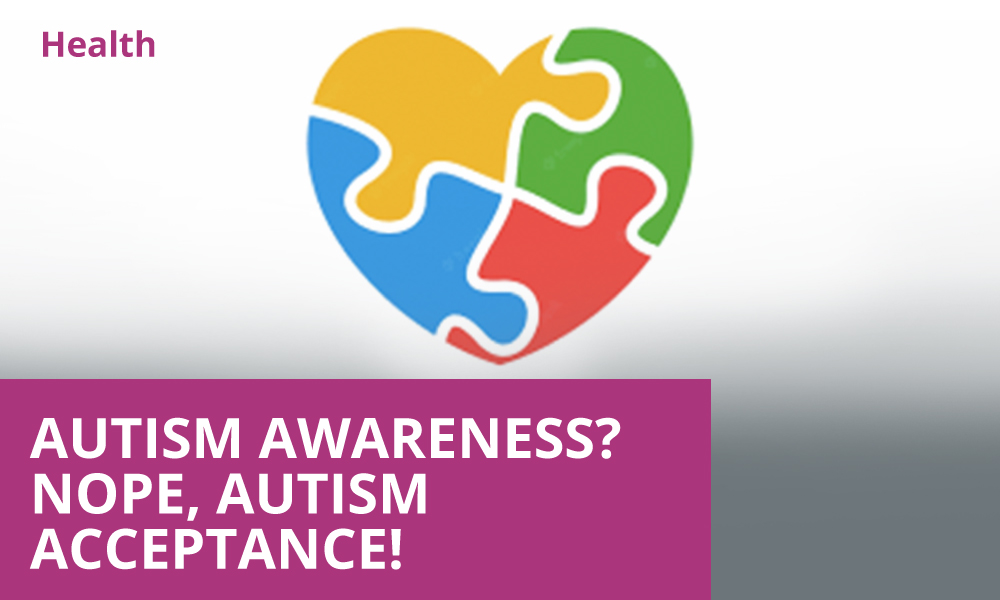Autism is a developmental disorder caused by neurological differences in the brain. People with Autism Spectrum Disorder (ASD) often have problems with social communication and interactions. They may also exhibit repetitive behaviours or interests, a delay in cognitive or learning skills, hyperactivity, inattentiveness, epilepsy and other conditions.
Autism was first diagnosed in 1933 in the United States. Nearing 100 years since, we can safely say that most people are now aware of Autism, or can we? According to the findings of a study that the International Clinical Epidemiology Network Trust carried out, one in 66 children is diagnosed with ASD in India. Most symptoms are evident by the age of 2 and with early intervention, children have the potential to make substantial improvements and likely continue living a “normal” life. The goal of these interventions should be to help the children achieve their full potential by recognizing that they have autism instead of masking it.
One of the most significant challenges we have encountered up until recent years in metropolitan areas, and continue to confront even now in rural areas is the situation where professionals diagnose a child with autism and then proceed to say daunting words such as, “I am sorry. There is nothing we can do for your child.” In a country like India, where discussing mental health is already considered taboo, being unaware of the disorder leads parents to be further ashamed and often hide the child away from the world.
Awareness alone of autism is insufficient; what we as a society require at this point is acceptance of autism and we need to do that with our actions.
One of the biggest myths that we come across so often is that children with autism are “gifted” and that they are special. They are indeed exceptional and gifted but to the same extent as a neurotypical person. They are all diverse in their personality and ability. We care for them like we care for any child. We listen to them, understand them and accept them as they are: different.
Autism can give a person the appearance of being confused or thoughtless. They can give off the impression of being indifferent or bad-tempered. But the truth of the matter is that this neurological disorder comes with a lack or limitations of social skills. Some of them may comprehend what you are saying but be incapable of responding to you; others may have the skill to provide a response but may be anxious to do so, which eventually leads them to scream. For them, that is the only form of expression that seems plausible at the moment.
It is also possible that autism comes with sensory difficulties. Most children with autism are hypersensitive to loud noises. Very shrill and high-pitched noises cause them significant discomfort. They might also have an adverse reaction to being touched. Certain textures may trigger or even soothe them. They do not push their loved ones away because they do not feel the sentiments of love; instead, it is primarily due to the overwhelming sensation they find hard to ignore that drives this behaviour.
Most people with autism function best when they have a routine, anything that disrupts the routine may interfere with their ability to regulate their emotions. They may want to wear the same clothes or eat the same food on a daily/weekly basis. They may get unnaturally attached to people or things and so on.
People with Autism could interpret what we consider to be safe to be threatening for them, especially when it’s new. For example, neurotypicals sometimes “act out” when induced with fear or anxiety, people with autism do the same. When we understand these differences at a young age, we may be able to start intervention soon. Intervention does not involve coercing the individual into conforming to social norms or behaving in a neurotypical manner; rather, it entails gaining an understanding of the individual’s unique requirements and preferences and including them despite their difference.
People with autism appear to be no different than the rest of us, which is why it can be challenging for others to understand or show any compassion towards them when they exhibit behaviours that are considered strange in public settings. They are often targets of bullying at school and are subjected to physical and emotional torment at the hands of their peers. When they try to seek refuge in their families, they are often misunderstood as intentionally causing harm or making lives difficult for themselves and others.
Let’s make it a priority to accept them and do everything in our power to create an atmosphere that is positive and supportive for them. In the case where we aren’t able to directly engage with such kids or provide for them, we should begin in our homes by educating our families and children about Autism. Let’s raise people’s consciousness in and about our societies and teach them to be kind and empathetic towards everyone regardless of their differences, as every degrading or humiliating remark can impact people significantly.
The yearning to be accepted is inherent to the human condition. Let us work towards a world in which people with autism are accepted unconditionally. The greater the degree to which we accept them, the less pressure we put on them, which in turn leads to better learning abilities, and eventually, a contribution to our society. As a parent, if we do not accept our children as they are, how do we expect the larger society to do so?


0 Comments